Best MTB handlebars – our expert guide to upgrading your bars
The best MTB handlebars can have a massive effect on ride quality – and these are the best out there
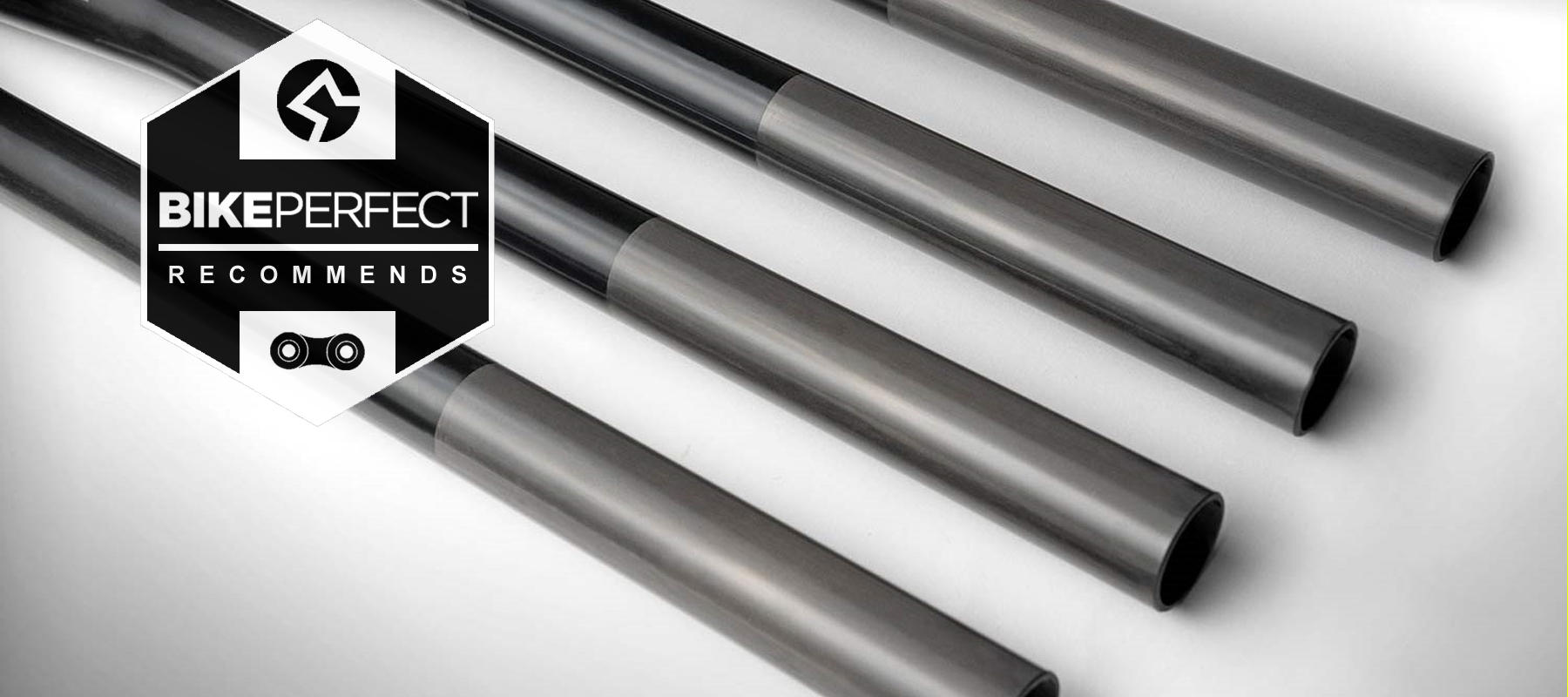
The best MTB handlebars will make all the difference to your ride; get the right shape, size and construction and you'll stay secure, comfortable and in control. Get it wrong and you may never feel fully at one with your bike.
While it's tempting to just ride with the handlebar that came with your bike, it's really worth experimenting with different set-ups to make sure it's really right for you – as a major contact point, it has to fit you as well as the bike.
As much as it might just look like a stick for pointing your bicycle with, a handlebar has a lot of variables – the width, rise and sweep all affect you directly, and the material and tubing style greatly affect ride characteristics too.
You've also got to choose the right stem to attach it with, of course – luckily for you, we've got everything you need in our best mountain bike stems feature right here. and for more on bar setup, see our article on getting the perfect MTB cockpit.
Figuring out the right combo will improve your cornering and control on technical terrain, help you breathe better on climbs, and leave you with fewer aches and pains at the end of your ride.
For detailed help with choosing the right thing, keep reading past out favorite MTB handlebars for expert guidance!
Best MTB handlebars
- Santa Cruz Carbon 800 Riser Bar
- Gusset S2
- Specialized Traverse SL
- PNW Range Gen 3
- PRO Tharsis XC
- Enve M6 MTB
- One Up Carbon
- Race Face Next 35
- Deity Skyline 787
- Renthal Fatbar
- Spank Spike 800 Vibrocore
- Chromag OSX
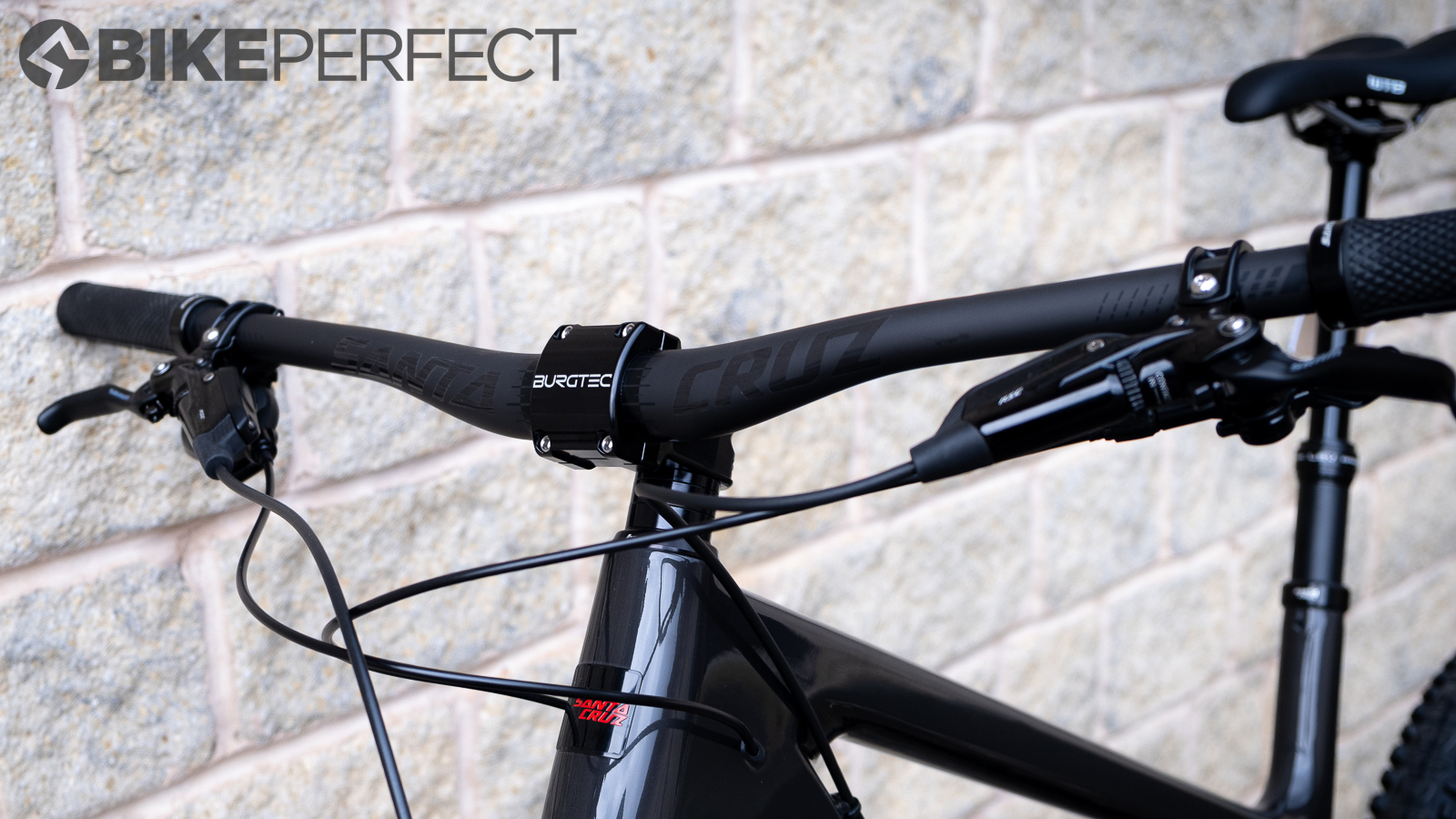
Specifications
Reasons to buy
Reasons to avoid
At 800mm wide and 233g, this is bang in the middle of the carbon bar spectrum – something the shaping, with its nine degree backsweep and five degree upsweep, matches perfectly. It only comes in a 20mm rise and a 35mm clamp size, though.
A bar like this can save you 70g-100g over an alloy equivalent, and the Santa Cruz branding is fairly subtle if your bike is something else. If you were planning to chop it a fair bit (it has cut lines), note there's a 760mm version as well.
Typically, for Santa Cruz, these carbon bars aren’t cheap but they’re a classic comfortable shape, with an excellent well-controlled, comfortable ride feel backed up by an exceptional lifetime warranty.
For more, check out our full Santa Cruz Carbon 800 Riser Bar review.
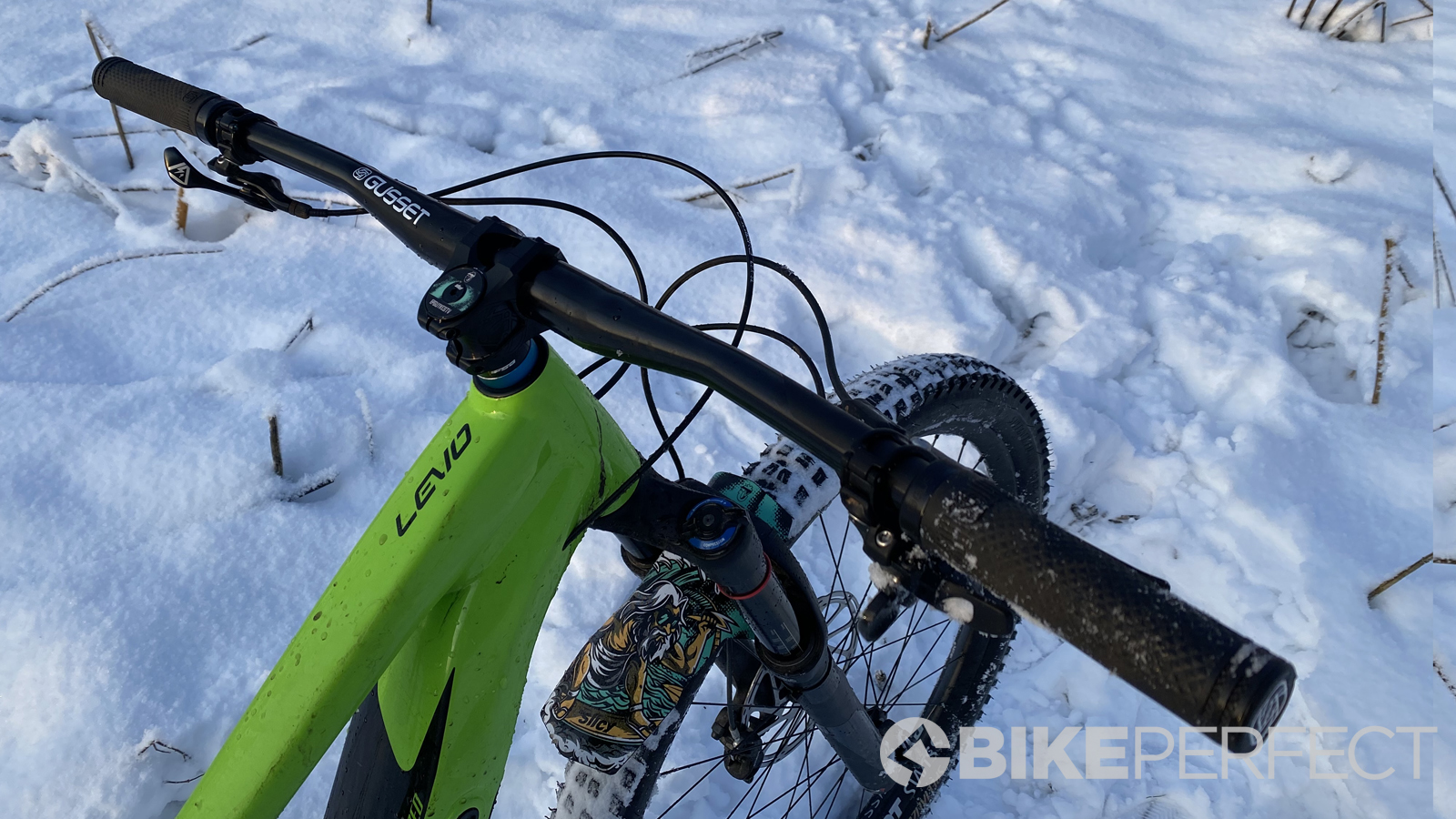
Specifications
Reasons to buy
Reasons to avoid
The Gusset S2 is a big, tough bar developed from the almost-as-big-and-tough Slade bar that we've long admired. If you want bombproof strength without spending a fortune, this is for you.
It's 800mm wide (with cut marks) and fits 35mm stem clamps, and the 7075 aluminum build gives an incredibly rigid ride – in fact it can be too uncompromising and harsh on long or very rough rides, though it's brilliant for low speed precision and feedback on shorter runs.
There's a useful range of 10, 20, or 38mm rises, and the five degree upsweep and eight degree backsweeps are well judged.
If it's just too stiff the matching S2 stem can add a bit of flex, or you could opt for the still-available Slade bars with their narrower, less rigid 31.8mm center section.
Read our full Gusset S2 handlebar review.
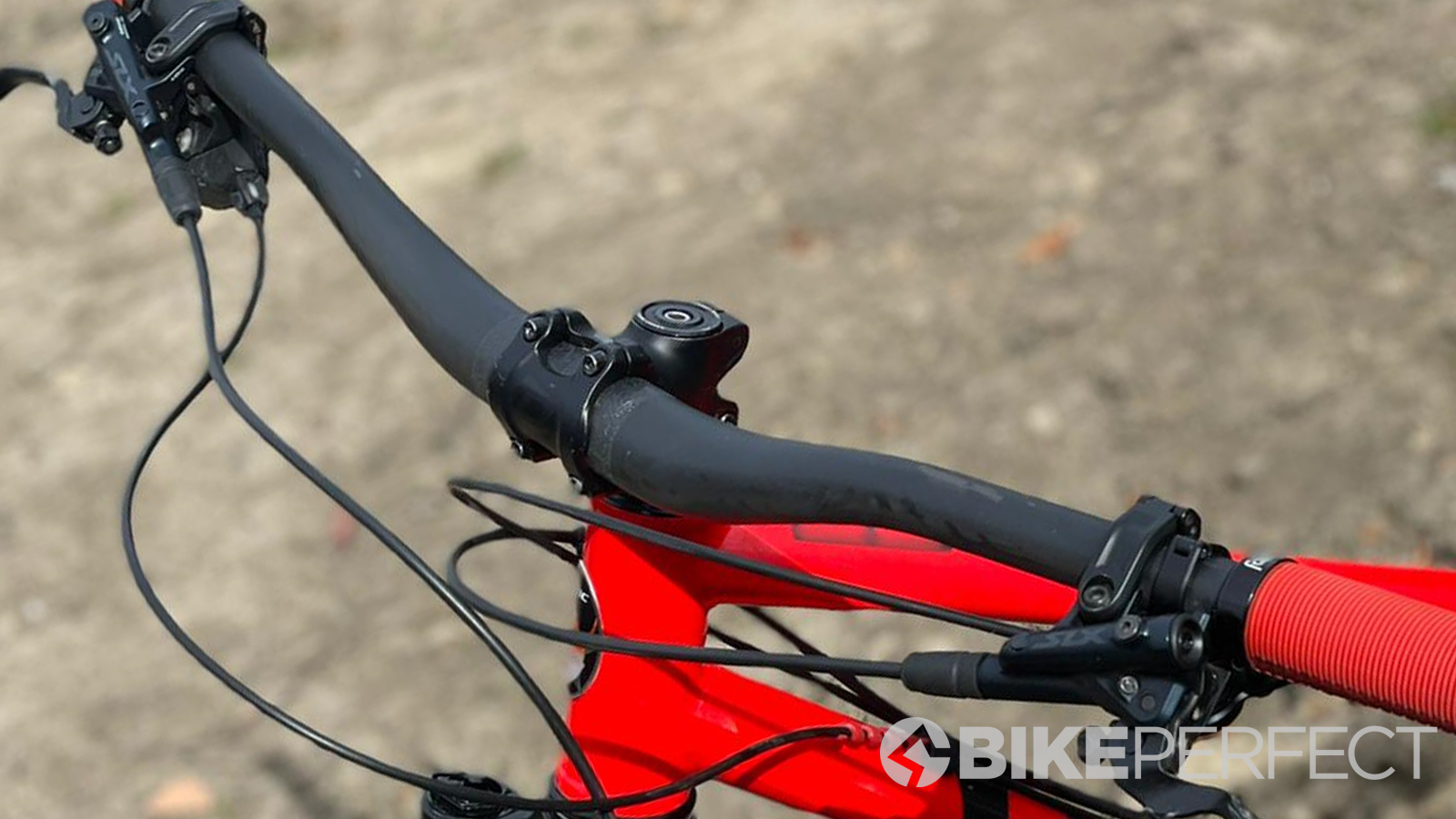
Specifications
Reasons to buy
Reasons to avoid
At just under 230g these are a good weight for 800mm bars, but they're still tough enough for heavy-duty riding. In fact, Specialized calls these 'downhill tough.'
Like many 35mm clamp carbon bars they're also notably stiff, but the carbon is tuned very well – they're strong and precise but not harsh, even on rough trails.
The six degree upsweep and eight degree backsweep gives a classic shape that will work for most riders, though the single 30mm rise is less universal, especially if you're on big wheels with big travel.
Our tester found it a shame the price matches hand-made carbon bars when these are mass-produced, but beyond that there's little to dislike.
Check out our full review of the Specialized Traverse SL handlebar.
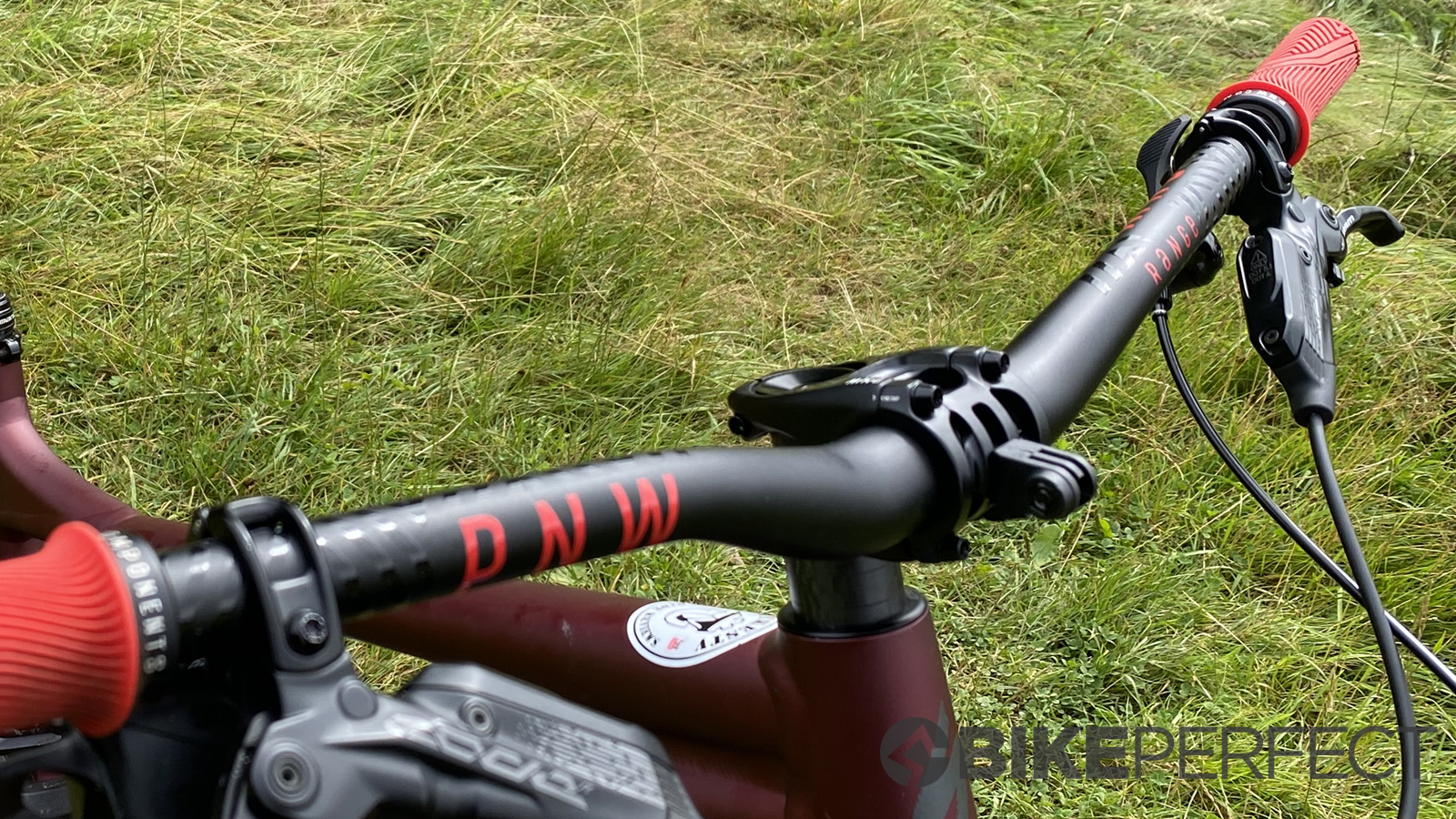
PNW Range Gen 3
Specifications
Reasons to buy
Reasons to avoid
This 800mm handlebar is the latest version of the one designed by professional mountain biker Kyle Warner, which we liked a lot when we tested it back in 2020.
Since then it's grown from 780mm to 800mm wide and gained a 35mm clamp option alongside the older 31.8mm, which has neatly addressed a couple of our tester's concerns.
Our tester found the 2014 alloy PNW uses offers a smooth and compliant ride on long, aggressive descents, while the 10-degree back sweep creates a comfortable wrist position for all-day riding. It's still not the lightest option – that extra width adds a few grams, in fact – but nevertheless this is a solid bar for hard-charging enduro riders.
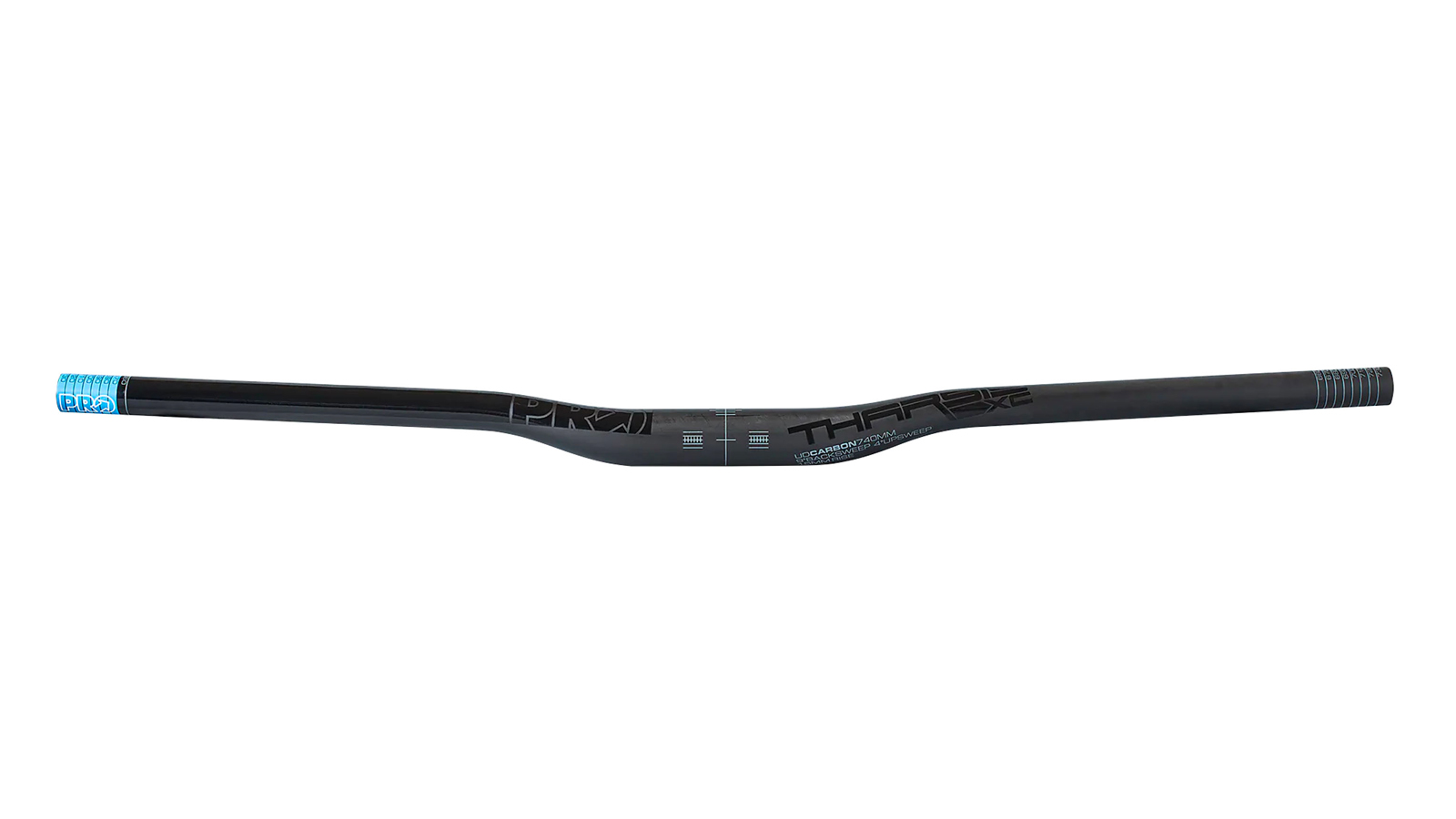
PRO Tharsis XC
Specifications
Reasons to buy
Reasons to avoid
Sitting at the top of PRO's range, the Tharsis XC comes in widths from 700mm to 740mm, and either flat or with a rise.
Made from unidirectional carbon fiber, the nine degree backsweep and four degree upsweep are ideal for aggressive climbing positions – but they're not, in themselves, going to cause you any fatigue.
The Tharsis ignores ultimate stiffness in favor of tremendous vibration damping, but doesn't feel flexy or vague as a result. As PRO is a Shimano brand, it's no real surprise to see internal routing for its Di2 shifters, but it's great news for serious cross-country riders anyway.
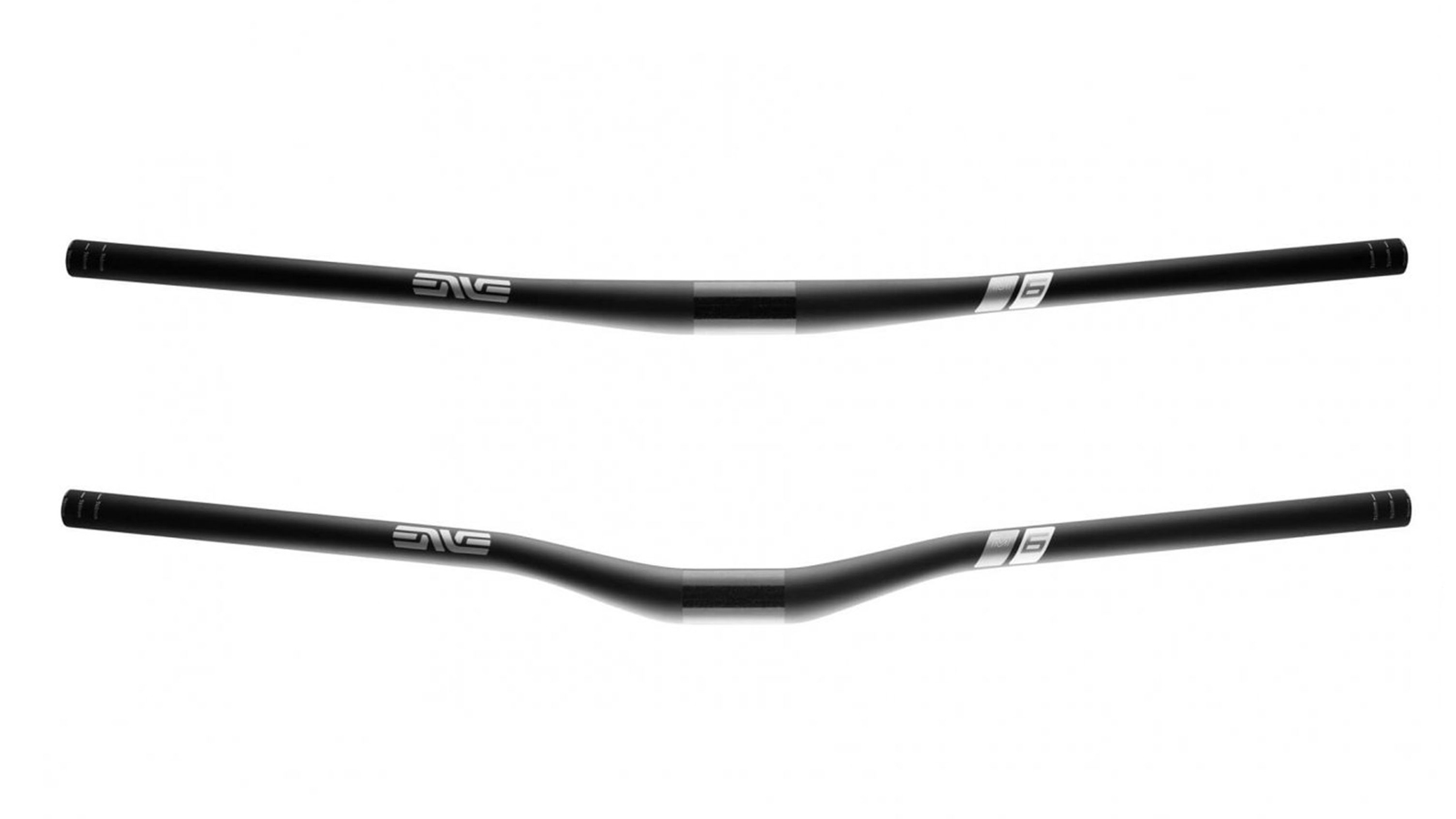
ENVE M6 MTB
Specifications
Reasons to buy
Reasons to avoid
ENVE makes a range of carbon bars, each with a layup tuned to a specific riding application, from the cross-country oriented M5 up to the burly, downhill-ready M9. This M6 sits one up from XC and is aimed at trail riding.
It's 780mm wide with cut lines down to 740mm, and has a 31.8mm clamp – if you want a 35mm clamp diameter you need the M7. The M6 also comes with either a traditional 25mm rise or a flattish 7.5mm rise, and a pretty typical nine degree backsweep and five degree upsweep.
ENVE doesn't recommend chopping these any narrower than 740mm as it will make them overly stiff – and they are already plenty rigid – yet they're also compliant enough for considerable comfort.
The M6 is very expensive, but it's also one of the best trail bars you can buy.
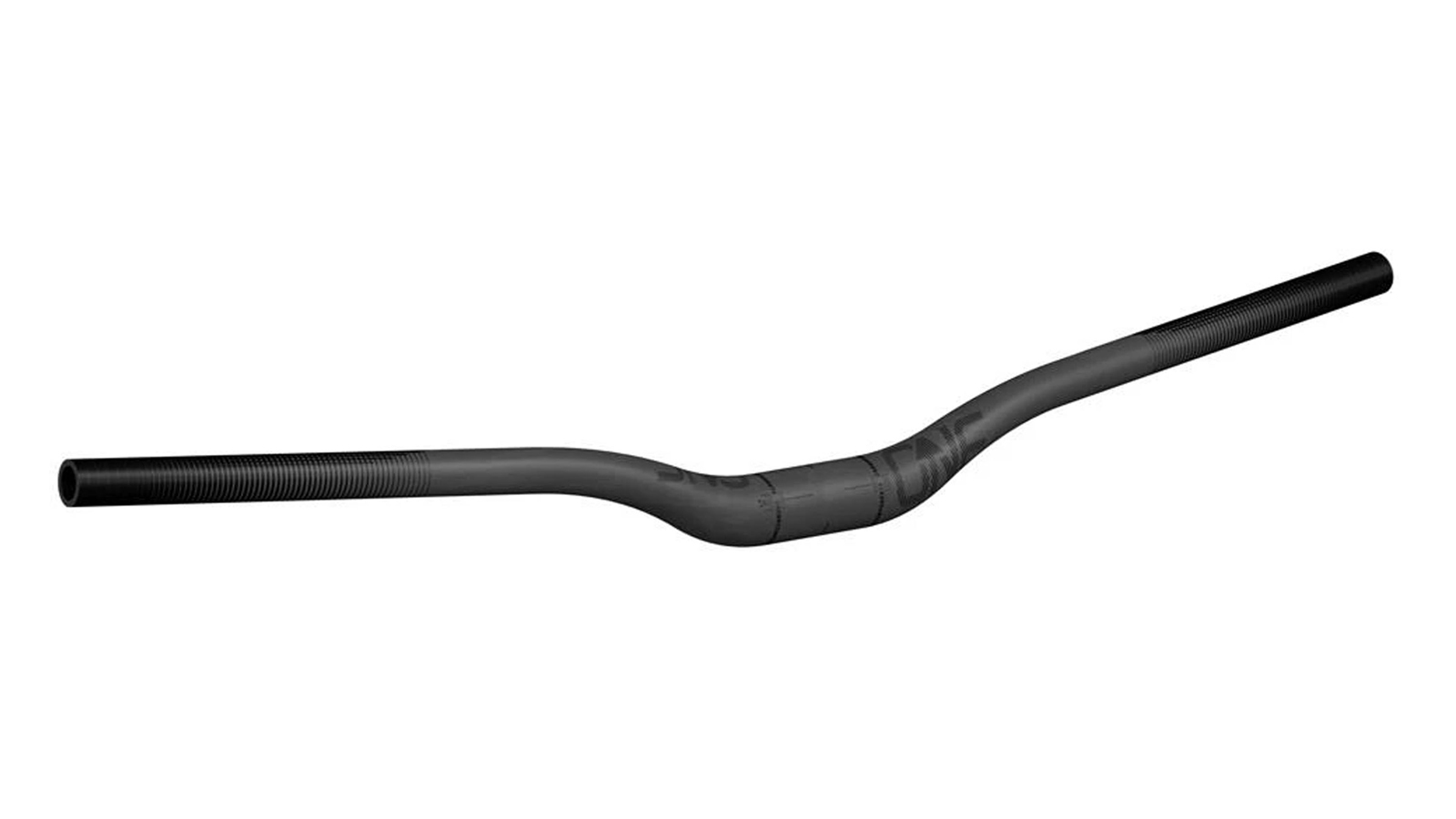
One Up Carbon
Specifications
Reasons to buy
Reasons to avoid
One Up Components is best known for thinking outside the square, and their carbon bars are the embodiment of this ethos – they're oval. Beyond the clamping regular 35mm clamping surface the cross section turns egg-shaped, with the horizontal plane maintaining 35mm for a few centimeters, while the vertical plane quickly thins to 22.2mm.
This shaping makes the bar less stiff in certain directions, and allows One Up to tune in vertical flex for comfort, while keeping the horizontal plane robust for accurate steering.
According to One Up, tested against other carbon bars and foam-filled aluminum bars, they found a 21 percent increase in vertical compliance with a 28 percent increase in steering stiffness.
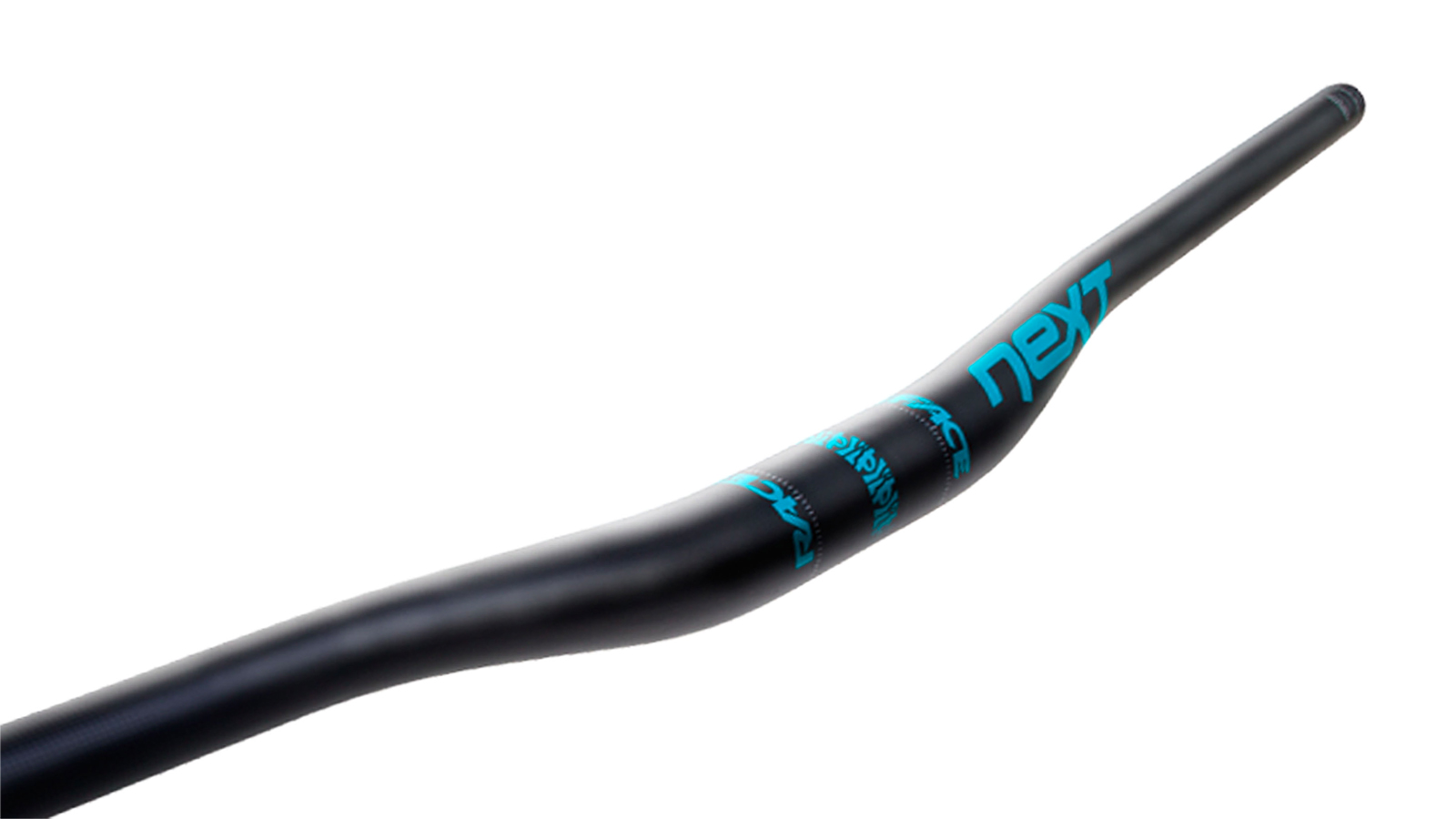
Race Face Next 35
Specifications
Reasons to buy
The Next 35 bars share a similar geometry and price tag with the Next R and SixC models, but are the lighter, narrower XC or light trail option.
Obviously though they still use the larger 35mm clamp diameter, and Race Face says that allows it to get rid of material throughout the rest of the bar without sacrificing stiffness or strength. With a claimed weight of just 180g, they're certainly usefully light.
The width is 760mm only, but there are 10mm and 20mm rise options.
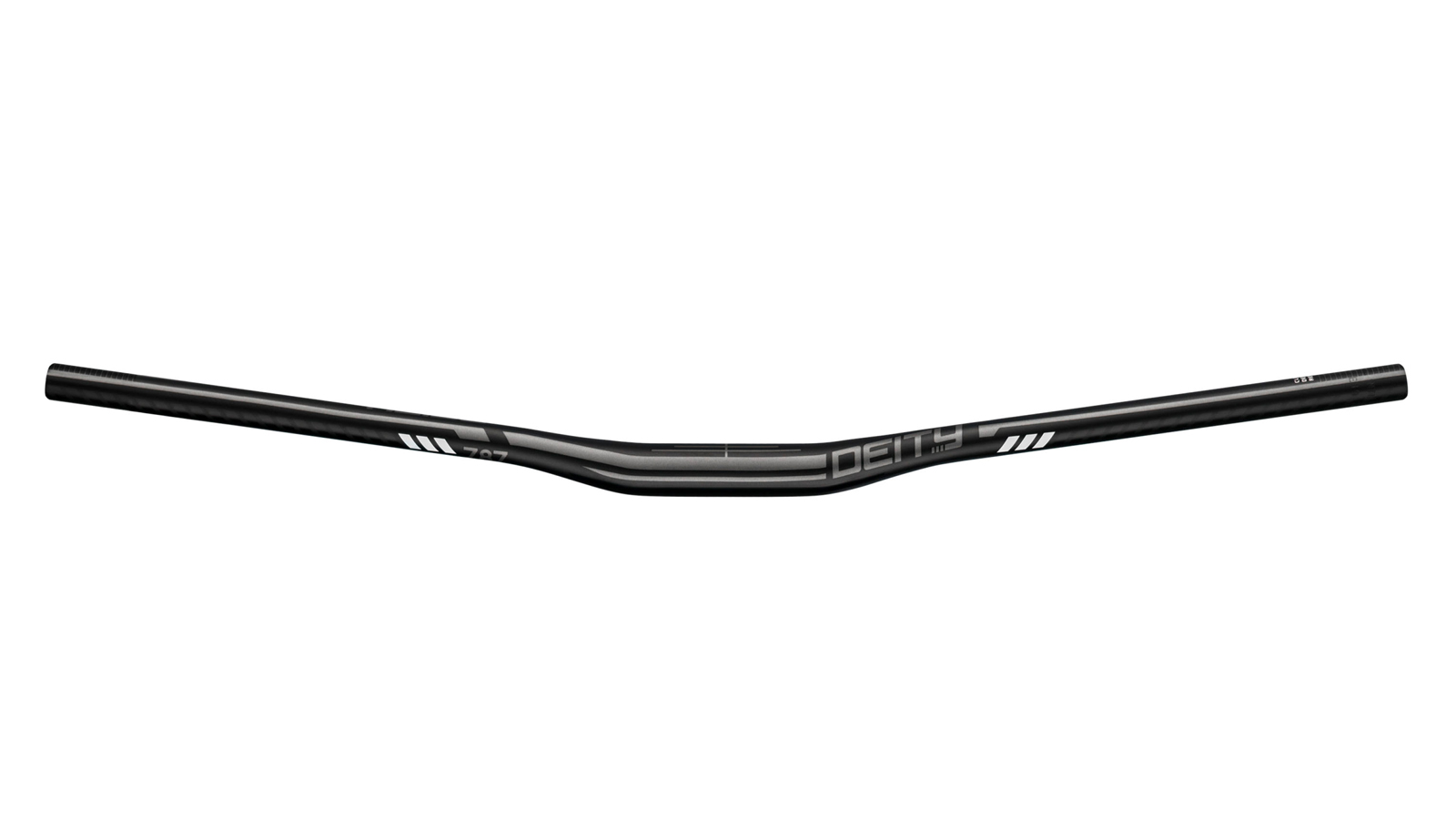
Deity Skyline 787
Specifications
Reasons to buy
Reasons to avoid
Geared towards all-mountain and enduro riders, the Deity Skyline 787 bars are light but gluttons for punishment. Measuring 787mm uncut, the bars are made from 7075 T73 gradient-butted aluminum and feature a 9-degree backsweep and 5-degree upsweep.
Alloy bars always run the risk of being too stiff and transmitting harsh vibrations through your hands, but using clever butting – which involves varying the wall thickness along the tube's length – the Skyline finds the right balance between stiffness and comfort.
Deity does these with a range of bright graphics that them some of the coolest-looking bars you can buy.
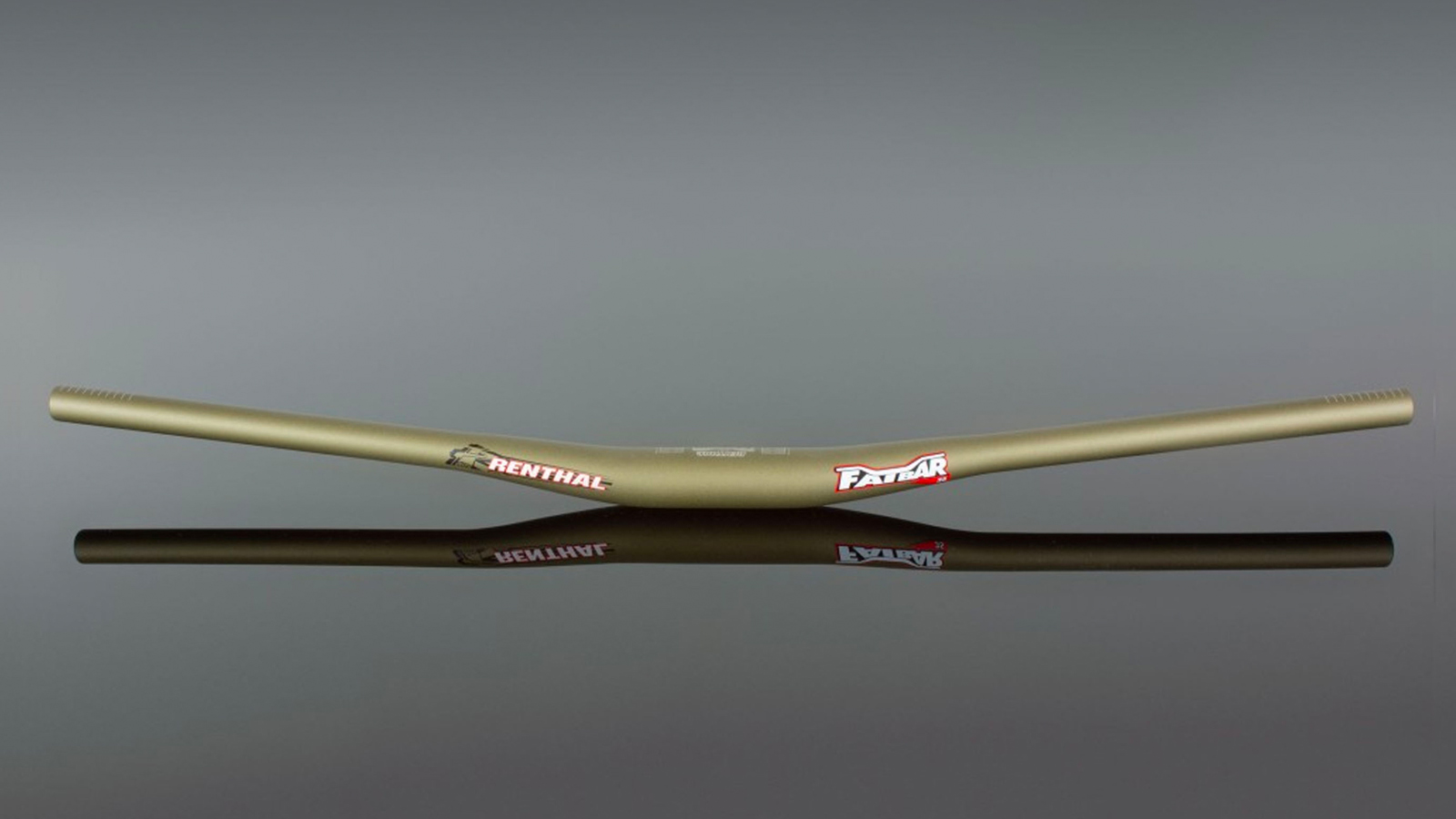
Renthal Fatbar
Specifications
Reasons to buy
Reasons to avoid
Redesigned and widened to 800mm a little while back, the Fatbar remains loved for its fantastic quality, excellent ride feel and relatively flat shaping (it has a seven degree backsweep and a five degree upsweep).
Despite being wider than the original version, it's actually lighter (a claimed 305g), but the heat-treated 7-series aluminum construction has lost none of its impressive ruggedness.
It comes in a huge variety of options, including 31.8mm and 35mm stem clamp diameters, rises from 10-40mm in 10mm increments, and either gold or black finishes. Renthal also does 225g carbon and 760mm-wide 'Lite' versions in the same plethora of options.
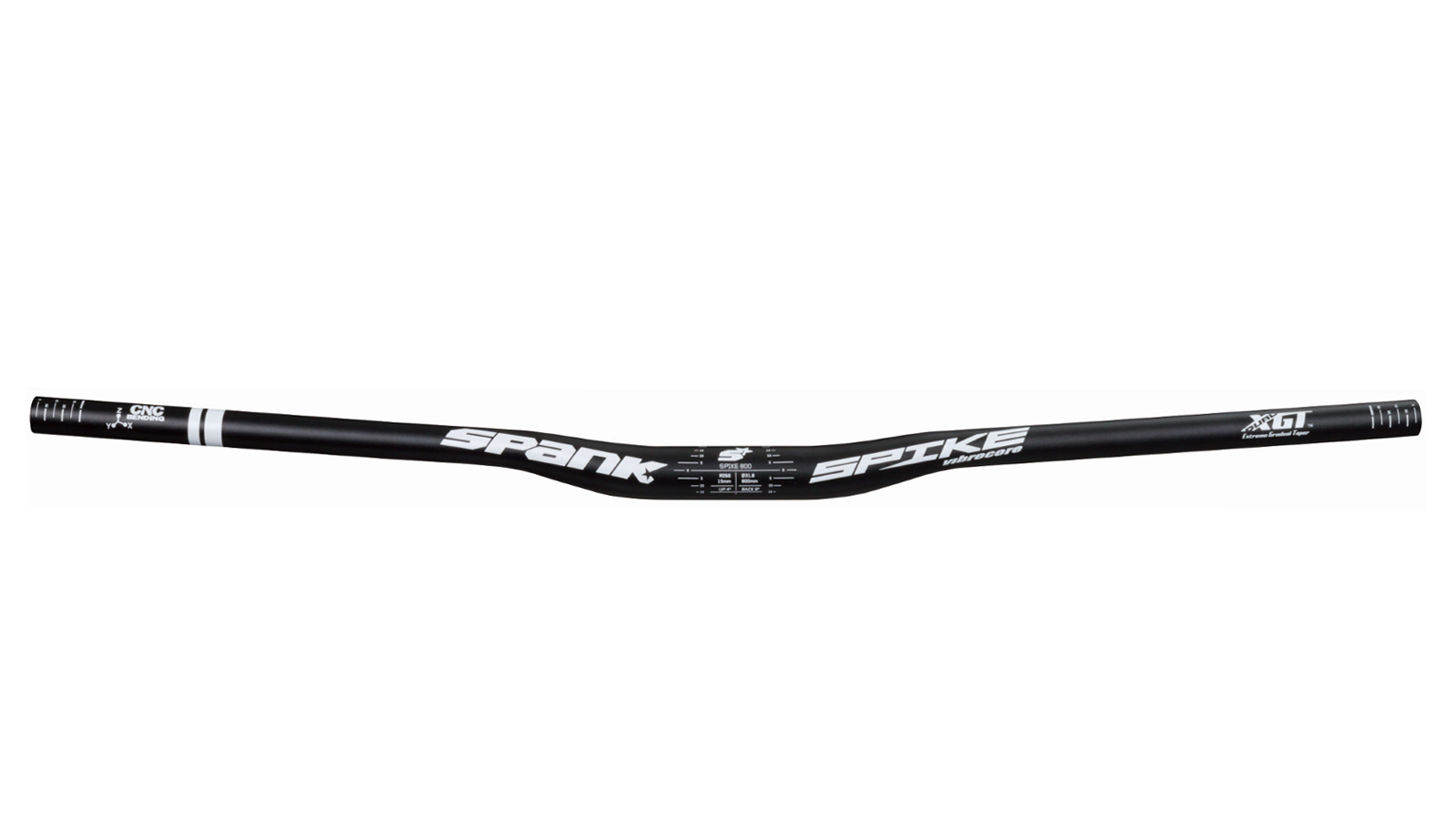
Spank Spike 800 Vibrocore
Specifications
Reasons to buy
Reasons to avoid
Motocross riders have been using foam-filled bars for years to combat the vibrations from the engine, so it’s no surprise to see such a simple technology find its way to MTB cockpits.
Spank hasn’t just stuffed a bunch of packing peanuts into the Spike bars either; these use a special open-cell foam with a density just right for silencing trail buzz. While it may sound like a gimmick, the difference between the foam-filled bars and a standard set is noticeable. Are they as good as carbon? Hard to say, but they aren't far off.
The Vibrocores are slightly cheaper than most carbon bars, although inevitably they're also heavier.
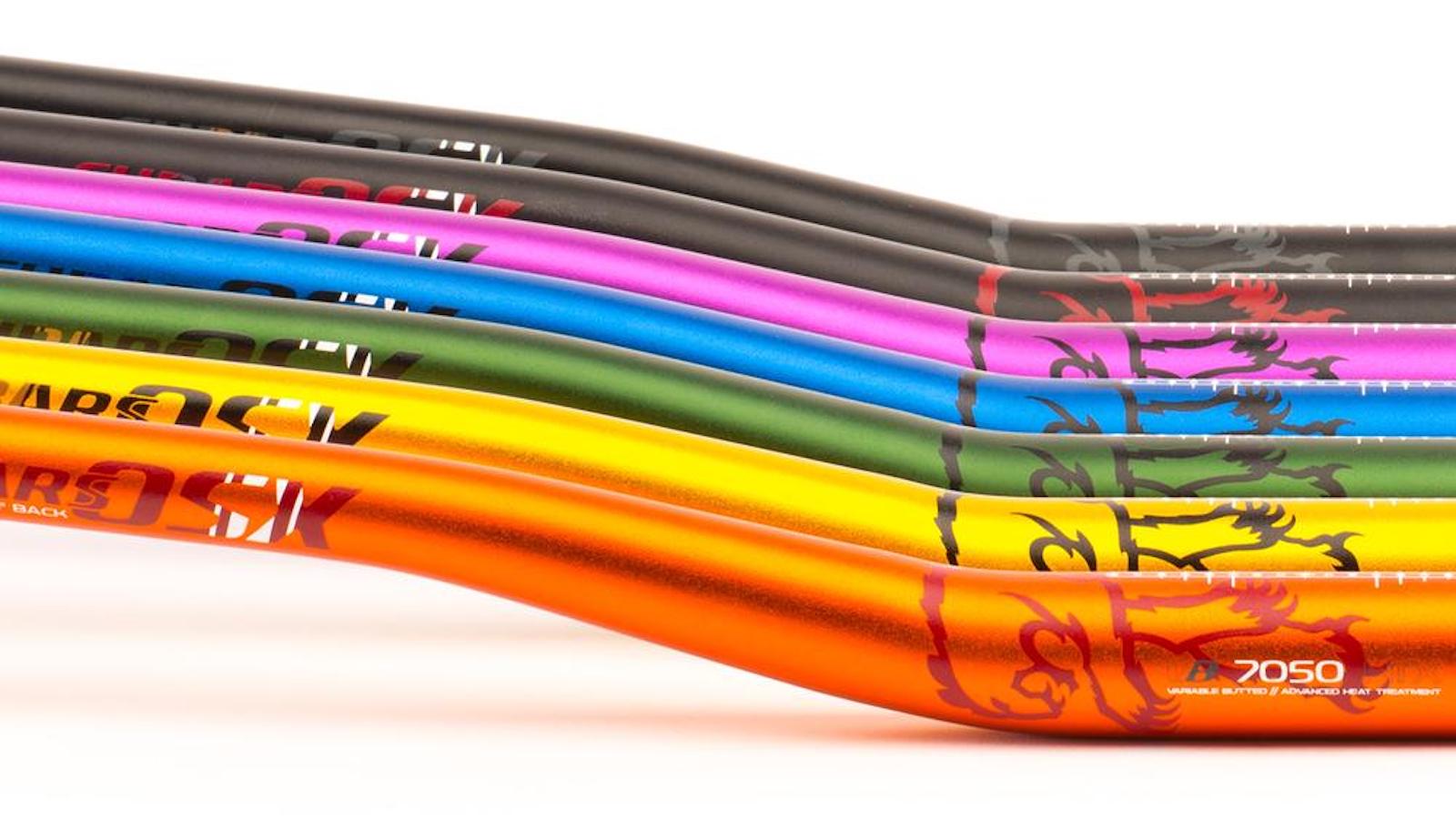
Chromag OSX
Specifications
Reasons to buy
Reasons to avoid
Chromag's OSX handlebars are a minor classic for the hard-riding crowd, and have been gracing the cockpit of dirt jumpers to downhill rigs alike for years.
Recently updated and reshaped, the latest OSX uses variable butting (changing wall thicknesses) in its 7050-grade aluminum construction to balance strength with weight, and rigidity with comfort.
While the color choice is wide (and frequently very cool), the size options are not – in fact, there's a choice of one! The OSX is 800mm with a 31.8mm clamping diameter, a 25mm rise and a claimed weight of 325g.
The backsweep is eight degrees and the upsweep is five degrees. If those numbers suit you and your bike, this is an an excellent (and attractive) option at a good price.
What should you look for in a handlebar, and what do the specs mean?
What is handlebar sweep?
As the name suggests, backsweep is the angle at which the bars bend back towards the rider, and usually ranges from 0-degrees to about 12-degrees. Some radical designs have up to 45 degrees of backsweep, but that's rare.
Upsweep refers to how the ends angle upwards from horizontal, and is a separate thing from the rise. Not all bars have an upsweep listed, but most measure between four and six degrees.
What does rise refer to?
The rise is the height difference between the grips and the clamp area. Most MTB handlebars have between 0mm-50mm, though there are a few that drop if you want a particularly low front end.
Is handlebar width important?
The specific width that's best for you will be determined by your body – your shoulder width in particular – and riding style. For trail and aggressive riding a wider bar gives you a more stable stance and greater leverage for bossing the front wheel, and also opens up your chest for easier breathing on the limit.
If you're unsure, chose a bar with handy cut lines and err towards the wide side – you can always trim down. Do note though that carbon bars need careful cutting and a mask; you do not want that dust in your lungs!
Bars are available in widths ranging from around 600mm up to well over 800mm, but 720mm-800mm is pretty commonplace.
Is clamp diameter important?
Most serious bars swapped from the old road bike standard of 25.4mm (1in) to 31.8mm (1 1/4in) many years ago, and more recently there's been another step up to 35mm (around 1.4mm). This is only in the central section where the stem holds the bar to the bike, however – every bar tapers to 22.2mm at the ends, and any grip will work with any bar.
The benefits of the larger 35mm bars tend to be stronger and stiffer, and with an increased surface area don't need as much clamping force to prevent slipping.
Your stem will determine the diameter of the bar you can run, so if you want to switch from 31.8 to 35, you'll need to budget a bit extra for a compatible stem.
Should I choose alloy or carbon handlebars?
For the most part, handlebars are either an aluminum alloy of some type or carbon fiber, though there are a few boutique titanium models out there too. Only the very cheapest (and thinnest) bars tend to be made of steel.
Aluminum bars are cheap and robust; however, they can be overly stiff and a bit harsh – they're not great at vibration damping. But if you're a downhiller, on a budget or just crash a lot, hardy aluminum handlebars are your ticket.
Carbon can be very light and stiff yet good at absorbing vibration, but they're harder to make – so they're more expensive. There's also the worry of crash damage; while in many cases carbon fiber bars are stronger than their metal counterparts, if they do fail they fail catastrophically, while even serious damage can be hard to see.
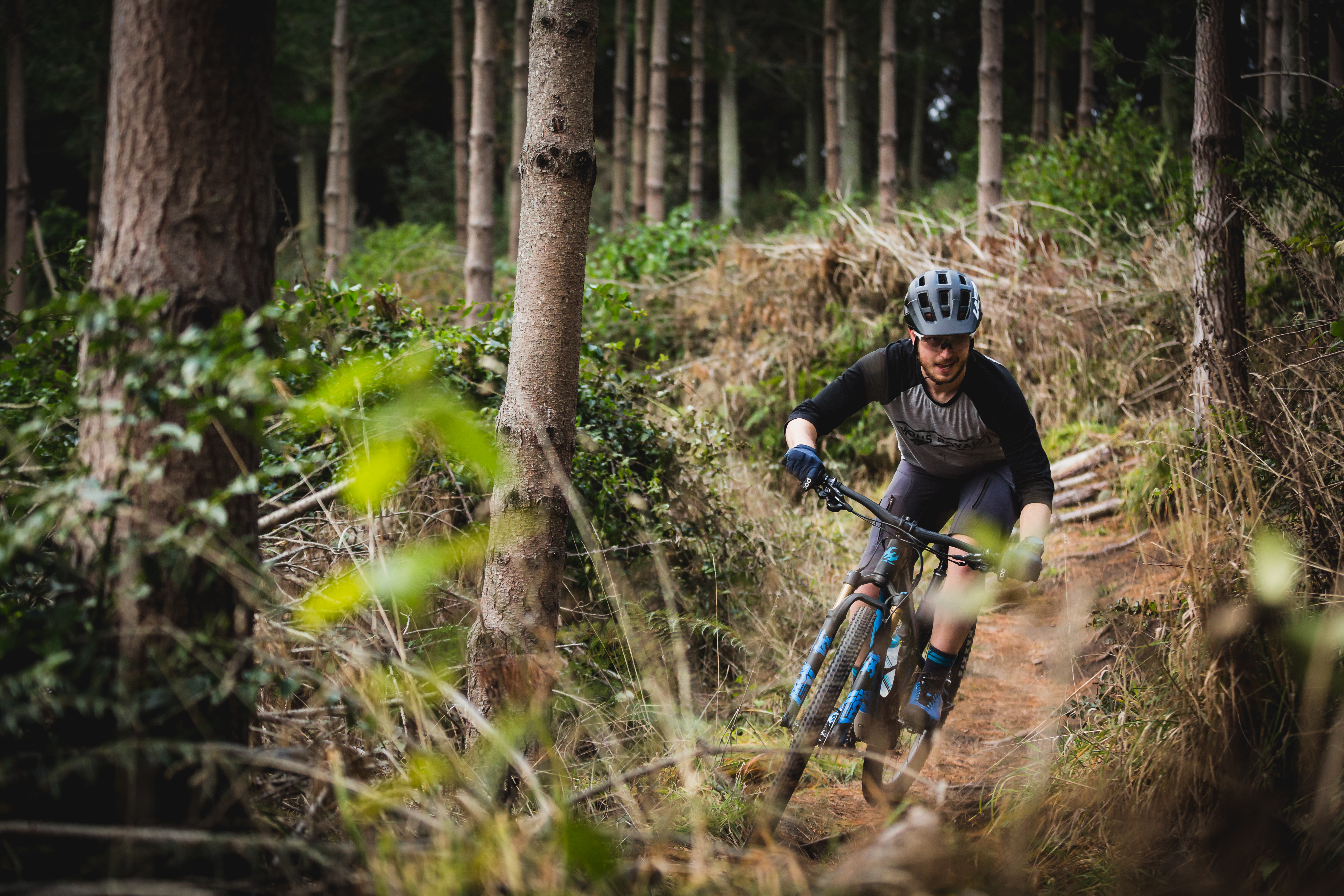
Born and bred in Colorado, and now based in Australia, Colin comes from a ski racing background and started riding as a way to stay fit through the summer months. His father, a former European pro, convinced him to join the Colorado State University collegiate cycling team, and he hasn't stopped since. It's not often he pins on a number nowadays, and you'll likely find him in search of flowy singletrack, gravel roads and hairpin corners. Colin has worked at Bikeradar and is a regular contributor to Australian Mountain Bike and Cyclist magazines.
Rides: BMC Team Machine SLR01, Trek Top Fuel 9, Ibis Ripley
- Steve WilliamsFreelance writer
